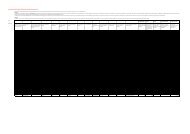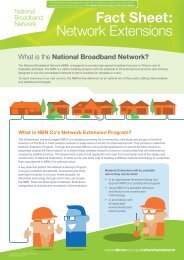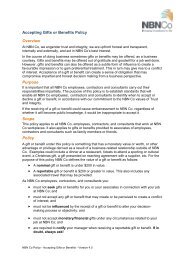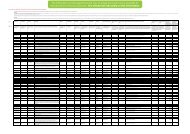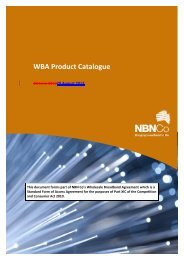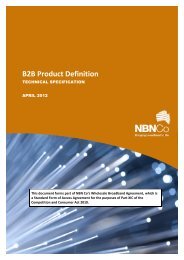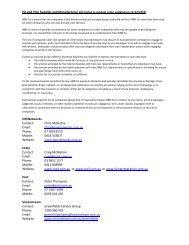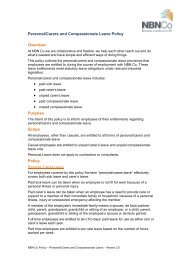NBN Co Network Design Rules
NBN Co Network Design Rules
NBN Co Network Design Rules
You also want an ePaper? Increase the reach of your titles
YUMPU automatically turns print PDFs into web optimized ePapers that Google loves.
<strong>NBN</strong> <strong>Co</strong> <strong>Network</strong> <strong>Design</strong> <strong>Rules</strong><br />
Wireless Access Transit:<br />
Wireless access transit is required between FAN and POI sites. As with the fibre access transit, the<br />
basic transport using Managed Services is a pair of fully redundant (1+1) point-to-point Ethernet<br />
services running at subrate, 1Gbps or 10Gbps speeds.<br />
FAN<br />
Wireless<br />
Aggregation<br />
Equipment<br />
Managed Service<br />
Managed Service<br />
POI<br />
Agg.<br />
Swit<br />
ch<br />
POI<br />
Agg.<br />
Swit<br />
ch<br />
POI<br />
Figure 28 Wireless access transit<br />
1.1.21. Direct Fibre<br />
Direct fibre is the underlying building block of the Transport network domain. The following<br />
connectivity scenarios are either fully or partially supported by direct fibre:<br />
<br />
<br />
<br />
Fibre Access Transit<br />
Greenfields Fibre Access Transit<br />
Wireless Transit<br />
Fibre Access Transit:<br />
Direct Fibre for fibre access transit is limited by the interfaces supported on the OLT. The OLT only<br />
supports 10GBase-LR interfaces today, which limits direct fibre reach for fibre access to 10km. This is<br />
being upgraded to support 10Gbase-ER interfaces in 2012, extending the reach to 40km.<br />
The following direct fibre transit scenarios are supported for fibre access transit:<br />
<br />
<br />
Direct fibre for both paths from the OLT back to the POI. This can be used when both fibre<br />
paths are ≤10km today, or ≤40km from mid-2012.<br />
Direct fibre on the short path from the OLT to the POI and direct fibre on the long path from<br />
the OLT to the nearest DWDM node. This can be used when the short path is ≤10km (≤40km<br />
from mid-2012) and the path to the nearest DWDM node is ≤10km (≤70km from mid-2012,<br />
as both the OLT and the DWDM nodes will support 10Gbase-ZR).<br />
37



